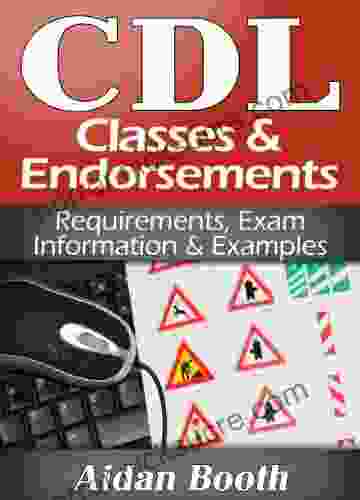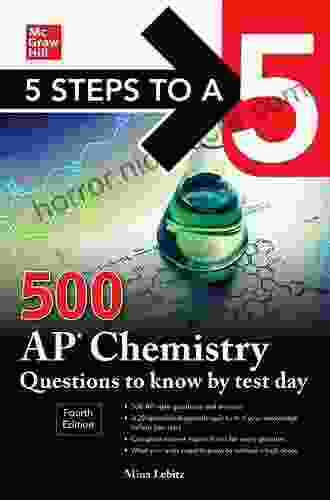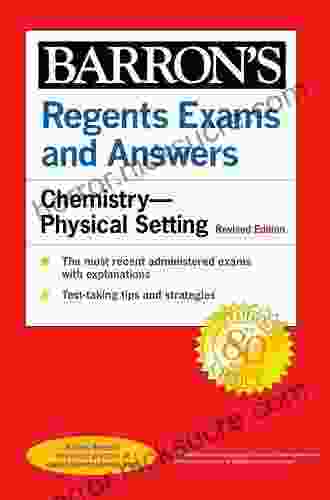The Complete Guide to Requirements: Everything You Need to Know

5 out of 5
| Language | : | English |
| File size | : | 2243 KB |
| Text-to-Speech | : | Enabled |
| Screen Reader | : | Supported |
| Enhanced typesetting | : | Enabled |
| Word Wise | : | Enabled |
| Print length | : | 21 pages |
| Lending | : | Enabled |
Requirements are the foundation of any successful project. They define what the project is supposed to do, how it should do it, and when it should be done. Without clear and concise requirements, it is impossible to develop a product that meets the needs of the customer.
This guide will provide you with everything you need to know about requirements, from the basics to advanced techniques. We will cover the following topics:
- What are requirements?
- The different types of requirements
- How to gather requirements
- How to analyze requirements
- How to manage requirements
- How to trace requirements
By the end of this guide, you will have a solid understanding of requirements and how to use them to ensure the success of your projects.
What are Requirements?
Requirements are statements that describe the desired behavior of a system. They can be used to define the functional, performance, and quality attributes of a system. Requirements can be expressed in a variety of ways, including natural language, diagrams, and mathematical formulas.
There are two main types of requirements: functional requirements and non-functional requirements.
- Functional requirements define what the system is supposed to do. They are typically expressed in terms of the inputs and outputs of the system.
- Non-functional requirements define how the system should perform. They are typically expressed in terms of the system's performance, reliability, security, and usability.
It is important to note that requirements are not the same as design. Requirements define what the system should do, while design defines how the system will do it. The design should be based on the requirements, but it is not always a direct translation of the requirements.
The Different Types of Requirements
There are many different types of requirements, each with its own purpose and level of detail. Some of the most common types of requirements include:
- Business requirements define the high-level goals and objectives of the project. They are typically expressed in terms of the business needs that the project is intended to address.
- User requirements define the specific needs of the users of the system. They are typically expressed in terms of the tasks that the users need to perform and the information that they need to access.
- System requirements define the functional and non-functional requirements of the system. They are typically expressed in terms of the system's inputs, outputs, performance, and reliability.
- Design requirements define the specific design decisions that will be made in order to meet the system requirements. They are typically expressed in terms of the system's architecture, components, and interfaces.
- Test requirements define the tests that will be conducted to verify that the system meets the requirements. They are typically expressed in terms of the test cases, test procedures, and expected results.
The type of requirements that you need will vary depending on the project. However, it is important to have a clear understanding of the different types of requirements and how they relate to each other.
How to Gather Requirements
The first step in requirements engineering is to gather requirements from the stakeholders. This can be done through a variety of techniques, including:
- Interviews are a great way to gather detailed requirements from individual stakeholders.
- Workshops are a good way to gather requirements from a group of stakeholders.
- Questionnaires are a good way to gather requirements from a large number of stakeholders.
- Document analysis can be used to gather requirements from existing documents.
- Observation can be used to gather requirements by observing the stakeholders in their work environment.
It is important to use a variety of techniques to gather requirements. This will help to ensure that you get a complete and accurate set of requirements.
How to Analyze Requirements
Once you have gathered requirements, you need to analyze them to identify any errors, inconsistencies, or omissions. This can be done through a variety of techniques, including:
- Inspection is a simple technique that involves reviewing the requirements for errors.
- Traceability analysis is a technique that involves tracing the requirements back to their source to identify any gaps or inconsistencies.
- Modeling is a technique that involves creating a model of the system to identify any errors or inconsistencies.
- Simulation is a technique that involves simulating the system to identify any errors or inconsistencies.
It is important to use a variety of techniques to analyze requirements. This will help to ensure that you identify all of the errors, inconsistencies, and omissions.
How to Manage Requirements
Once you have analyzed the requirements, you need to manage them throughout the project lifecycle. This includes:
- Creating a requirements management plan
- Tracking the requirements
- Reviewing the requirements
- Updating the requirements
- Communicating the requirements
It is important to have a robust requirements management process in place. This will help to ensure that the requirements are always up-to-date and that they are being used effectively.
How to Trace Requirements
Requirements traceability is the ability to track the requirements throughout the project lifecycle. This is important for a number of reasons, including:
- Impact analysis: If a requirement changes, you need to be able to trace the impact of that change on other requirements.
- Verification and validation: You need to be able to trace the requirements to the tests that will be conducted to verify and validate the system.
- Configuration management: You need to be able to trace the requirements to the components of the system that implement those requirements.
There are a number of different techniques for tracing requirements. The most common technique is to use a traceability matrix. A traceability matrix is a table that maps the requirements to the other artifacts in the project, such as the design documents, test cases, and code components.
It is important to have a traceability matrix in place. This will help to ensure that you can always track the requirements throughout the project lifecycle.
Requirements are the foundation of any successful project. By following the guidelines in this guide, you can ensure that you have a clear and concise set of requirements that will help you to develop a product that meets the needs of the customer.
5 out of 5
| Language | : | English |
| File size | : | 2243 KB |
| Text-to-Speech | : | Enabled |
| Screen Reader | : | Supported |
| Enhanced typesetting | : | Enabled |
| Word Wise | : | Enabled |
| Print length | : | 21 pages |
| Lending | : | Enabled |
Do you want to contribute by writing guest posts on this blog?
Please contact us and send us a resume of previous articles that you have written.
 Fiction
Fiction Non Fiction
Non Fiction Romance
Romance Mystery
Mystery Thriller
Thriller SciFi
SciFi Fantasy
Fantasy Horror
Horror Biography
Biography Selfhelp
Selfhelp Business
Business History
History Classics
Classics Poetry
Poetry Childrens
Childrens Young Adult
Young Adult Educational
Educational Cooking
Cooking Travel
Travel Lifestyle
Lifestyle Spirituality
Spirituality Health
Health Fitness
Fitness Technology
Technology Science
Science Arts
Arts Crafts
Crafts DIY
DIY Gardening
Gardening Petcare
Petcare Sarah Miller
Sarah Miller Lauren Wells
Lauren Wells Nicola Griffith
Nicola Griffith John D Barrow
John D Barrow Percy Keese Fitzhugh
Percy Keese Fitzhugh Robert Page
Robert Page Bob Raynor
Bob Raynor Virginia Smith Harvey
Virginia Smith Harvey Joe Baird
Joe Baird Sona Charaipotra
Sona Charaipotra John E Eck
John E Eck Kristin Cashore
Kristin Cashore Dean R Giles
Dean R Giles Bertil Gustafsson
Bertil Gustafsson Carol Devine
Carol Devine Joline Godfrey
Joline Godfrey Elizabeth Verdick
Elizabeth Verdick Mary V Solanto
Mary V Solanto Phil Stamper
Phil Stamper Scott Imhoff Phd
Scott Imhoff Phd Patti Jean
Patti Jean Joel Hooks
Joel Hooks Peggy J Martin
Peggy J Martin John Taylor
John Taylor John Huggan
John Huggan Ellen Meloy
Ellen Meloy Mike Settele
Mike Settele Kayla Small
Kayla Small Rosalie Knecht
Rosalie Knecht Carla Killough Mcclafferty
Carla Killough Mcclafferty Prof Dr Wa Liebenberg
Prof Dr Wa Liebenberg Chuck Lukacs
Chuck Lukacs Meghan Casey
Meghan Casey Olivia Longray
Olivia Longray Jill H Rathus
Jill H Rathus Chris Batha
Chris Batha Barry King
Barry King Mark Csikszentmihalyi
Mark Csikszentmihalyi The Mountaineers
The Mountaineers T L Branson
T L Branson Terrence Talley
Terrence Talley Zoe S
Zoe S Laurence S Moy
Laurence S Moy David Barrie
David Barrie Scott Wilson
Scott Wilson Buck Collins
Buck Collins Stephen Jenkinson
Stephen Jenkinson Dorian Gerhold
Dorian Gerhold Ricki Linksman
Ricki Linksman Kiera Cass
Kiera Cass Lucy Cooke
Lucy Cooke Deanna Raybourn
Deanna Raybourn Joseph Ciarrochi
Joseph Ciarrochi Will Oxley
Will Oxley Eliza Hof
Eliza Hof Roger Eckstine
Roger Eckstine Jessica Misener
Jessica Misener Stuart James Amei
Stuart James Amei Holly Parker
Holly Parker David Lawson Phd
David Lawson Phd Mikki Morrissette
Mikki Morrissette Troy Treasure
Troy Treasure Leila Kalmbach
Leila Kalmbach Edward Beauclerk Maurice
Edward Beauclerk Maurice Ellen Schreiber
Ellen Schreiber Suzanne Bender
Suzanne Bender Howard Burton
Howard Burton Christy Teglo
Christy Teglo Chanda Hahn
Chanda Hahn Nate Summers
Nate Summers Nick Price
Nick Price Christy Dorrity
Christy Dorrity Sarah Maclean
Sarah Maclean Eva Robild
Eva Robild Tiffany Vincent
Tiffany Vincent Stephanie Baier
Stephanie Baier Simon Armitage
Simon Armitage Jamie C Martin
Jamie C Martin Peter L Berger
Peter L Berger Lawrence Wright
Lawrence Wright Fran Zimniuch
Fran Zimniuch Scott Wetzler
Scott Wetzler Bruce Kirkby
Bruce Kirkby Edward O Wilson
Edward O Wilson Makiia Lucier
Makiia Lucier Ilya Grigorik
Ilya Grigorik Gerad Kite
Gerad Kite Scott A Hatch
Scott A Hatch Portia Iversen
Portia Iversen Dudley Wright
Dudley Wright Tony Frezza
Tony Frezza Huntley Fitzpatrick
Huntley Fitzpatrick Bb Easton
Bb Easton Christian Beamish
Christian Beamish Dan Orr
Dan Orr Lsatmax Lsat Prep
Lsatmax Lsat Prep Matthew Stein
Matthew Stein Hansa Bhargava
Hansa Bhargava Brett Cyrgalis
Brett Cyrgalis Tamarack Song
Tamarack Song John Henderson
John Henderson Greg Schwipps
Greg Schwipps Rough Guides
Rough Guides Daniel Boyarin
Daniel Boyarin Don L Gates
Don L Gates Jonathan Wolf
Jonathan Wolf Beth Baker
Beth Baker Tim Tebow
Tim Tebow Janice K Ledford
Janice K Ledford Santari Green
Santari Green David Quammen
David Quammen Emily Glickman
Emily Glickman John H Holland
John H Holland Alan Levinovitz
Alan Levinovitz Shelia Craig Whiteman Pt Dpt Clt
Shelia Craig Whiteman Pt Dpt Clt Jon M Sweeney
Jon M Sweeney Bell Hooks
Bell Hooks Denise Gaskins
Denise Gaskins Khoi Tu
Khoi Tu Maria Kriya
Maria Kriya Drew Estell
Drew Estell Heather Davis
Heather Davis David Jeremiah
David Jeremiah David Diaz
David Diaz Jaimal Yogis
Jaimal Yogis Jonathan Knight
Jonathan Knight Michael S Kelly
Michael S Kelly Kris Wilder
Kris Wilder Kenneth R Miller
Kenneth R Miller Peter Greyson
Peter Greyson Deborah Taylor Hough
Deborah Taylor Hough Jeremy Griffith
Jeremy Griffith Michael Pollan
Michael Pollan Ben Smith
Ben Smith L H Stacey
L H Stacey Kalliope Barlis
Kalliope Barlis Kyle Simpson
Kyle Simpson Clifford E Trafzer
Clifford E Trafzer James Henry Breasted
James Henry Breasted Budd Coates
Budd Coates Catherine White
Catherine White Bernadette Mcdonald
Bernadette Mcdonald Charlotte Mason
Charlotte Mason Peter Isler
Peter Isler Bernard Lewis
Bernard Lewis Stanley Cohen
Stanley Cohen Tomoko Fuse
Tomoko Fuse Tony Horwitz
Tony Horwitz Stephan A Hoeller
Stephan A Hoeller John J Watkins
John J Watkins Print Replica Kindle Edition
Print Replica Kindle Edition Connie Zweig
Connie Zweig John Grasso
John Grasso Maggie Oakes
Maggie Oakes Chris Mcintyre
Chris Mcintyre Brandon Sanderson
Brandon Sanderson David Sadker
David Sadker Tim Ingold
Tim Ingold Rick Rinehart
Rick Rinehart Educational Testing Service
Educational Testing Service Phil Martin
Phil Martin Kindle Edition
Kindle Edition Charles E Farhadian
Charles E Farhadian Joe Clement
Joe Clement S Connolly
S Connolly Henri De Lestapis
Henri De Lestapis Molly Mills
Molly Mills Kevin Johnson
Kevin Johnson Colin Gordon
Colin Gordon W David Pierce
W David Pierce Marian L Tupy
Marian L Tupy Debbie Marks
Debbie Marks Albert S Tarendash
Albert S Tarendash David Bain
David Bain William J Callaway
William J Callaway Leonard Mlodinow
Leonard Mlodinow Rainbow Rowell
Rainbow Rowell Hannah Witton
Hannah Witton Holly Black
Holly Black Nsca National Strength Conditioning Association
Nsca National Strength Conditioning Association Phil Jarratt
Phil Jarratt Robert W Smith
Robert W Smith Mark Lutz
Mark Lutz Gerard Taylor
Gerard Taylor Josh Gates
Josh Gates Jeff Ramey
Jeff Ramey Bill Jamison
Bill Jamison Linda Spatig
Linda Spatig Ben O Williams
Ben O Williams Kevin Easley
Kevin Easley George Daniel
George Daniel Daniel Muijs
Daniel Muijs Zecharia Sitchin
Zecharia Sitchin Leia Stone
Leia Stone Haya Leah Molnar
Haya Leah Molnar Blandine Calais Germain
Blandine Calais Germain Adam Stevens
Adam Stevens Deborah Blum
Deborah Blum Tracy Tresidder
Tracy Tresidder Steve Schwartz
Steve Schwartz Bill W
Bill W Charlotte Mary Yonge
Charlotte Mary Yonge Lori Ashley Taylor
Lori Ashley Taylor Sally Moran
Sally Moran Rohan Agarwal
Rohan Agarwal John Mandel
John Mandel Shelby Evans
Shelby Evans David Rynecki
David Rynecki Wesley C Salmon
Wesley C Salmon Melina Palmer
Melina Palmer Bertrand Russell
Bertrand Russell Glenn Bartley
Glenn Bartley Philip A Moore
Philip A Moore Dennis Fisher
Dennis Fisher Christopher Hill
Christopher Hill Joe Baker
Joe Baker Eric Provan
Eric Provan Joe Farinaccio
Joe Farinaccio Lebawit Lily Girma
Lebawit Lily Girma William Cane
William Cane David Estes
David Estes Brigid Kemmerer
Brigid Kemmerer Gwen Bettwy
Gwen Bettwy David Robson
David Robson Bella Bathurst
Bella Bathurst Mitch Terrusa
Mitch Terrusa Timothy Gowers
Timothy Gowers Beth Reekles
Beth Reekles Sandra Brown
Sandra Brown Joy Hendry
Joy Hendry Martin Lee Abbott
Martin Lee Abbott Darcy Kieran
Darcy Kieran Nicola Morgan
Nicola Morgan Declan Lyons
Declan Lyons Ahlia Rose
Ahlia Rose Jeremy Lent
Jeremy Lent Sharon Bergen
Sharon Bergen Eileen Kennedy Moore
Eileen Kennedy Moore Stephen Smith
Stephen Smith Elaine Stillerman
Elaine Stillerman Bob Hazard
Bob Hazard Lawrence J Cohen Phd
Lawrence J Cohen Phd Melissa Ford
Melissa Ford Rich Roll
Rich Roll Emma Walker
Emma Walker Julie L Hall
Julie L Hall Patricia Hachten Wee
Patricia Hachten Wee Lizzy Bolan
Lizzy Bolan Jenson Button
Jenson Button Department Of The Army
Department Of The Army Lelah Sullivan
Lelah Sullivan Slavka Bodic
Slavka Bodic Ben Gillman
Ben Gillman Ethan Sawyer
Ethan Sawyer Christian Smith
Christian Smith Benjamin Smith
Benjamin Smith Julie Urbanski
Julie Urbanski Nathan Doneen
Nathan Doneen Evelyn Underhill
Evelyn Underhill Emily Alison
Emily Alison Carol Walters
Carol Walters Lisa Mckay
Lisa Mckay Stacey Barrett
Stacey Barrett Kurt Jacobs
Kurt Jacobs Catherine Faherty
Catherine Faherty Jean Louis Vidal
Jean Louis Vidal Steven Rinella
Steven Rinella Paul Dolan
Paul Dolan Jo Boaler
Jo Boaler James Blake
James Blake Kelli L Ferguson
Kelli L Ferguson John Fry
John Fry Theodore Gray
Theodore Gray John R Bruning
John R Bruning Colin Fletcher
Colin Fletcher Stephen Renwick
Stephen Renwick Monica Swanson
Monica Swanson Clifford Geertz
Clifford Geertz Scott Wallace
Scott Wallace Erin Eileen Leigh
Erin Eileen Leigh Justin Roethlingshoefer
Justin Roethlingshoefer Rachael Denhollander
Rachael Denhollander Bill Hanstock
Bill Hanstock Maggie Kline
Maggie Kline Rachel Ann Cullen
Rachel Ann Cullen Benjamin Southerland
Benjamin Southerland Si Sheppard
Si Sheppard Neil Iton
Neil Iton Cokie Roberts
Cokie Roberts Peter Rendell
Peter Rendell Frank Ayres
Frank Ayres Rui Zhi Dong
Rui Zhi Dong Hillary Sadler
Hillary Sadler Ellen Galinsky
Ellen Galinsky Rich Johnson
Rich Johnson Heroes Of The Art
Heroes Of The Art Lisa Rene Reynolds Phd
Lisa Rene Reynolds Phd Margaret E Murie
Margaret E Murie Michael P Nordvall
Michael P Nordvall Laura Bashar
Laura Bashar Emma Mckinney
Emma Mckinney Vinny Berry
Vinny Berry Paul Bellow
Paul Bellow James Allen
James Allen Bernadette Noll
Bernadette Noll Cathy Jackson
Cathy Jackson Mike Veny
Mike Veny Melissa De La Cruz
Melissa De La Cruz Casey Schreiner
Casey Schreiner John C Lundell
John C Lundell Dan Inosanto
Dan Inosanto Ben Hoppe
Ben Hoppe Lawrence Baldassaro
Lawrence Baldassaro Ciara Attwell
Ciara Attwell John Biggar
John Biggar Lucy Ruddle
Lucy Ruddle Vasile Berinde
Vasile Berinde Gooseberry Patch
Gooseberry Patch Bernardo Kastrup
Bernardo Kastrup Stefanie Molin
Stefanie Molin Tracy Lash Decrosta
Tracy Lash Decrosta Kim John Payne
Kim John Payne Christine Desdemaines Hugon
Christine Desdemaines Hugon Christina Hitchcock
Christina Hitchcock Peter Brown Hoffmeister
Peter Brown Hoffmeister John Branch
John Branch Benjamin Johnston
Benjamin Johnston Richard G Lomax
Richard G Lomax Joshua Rodriguez
Joshua Rodriguez Jane Bottomley
Jane Bottomley Sanjay Gupta
Sanjay Gupta Vivienne Edgecombe
Vivienne Edgecombe Ashley Lecker
Ashley Lecker Jordan Rivet
Jordan Rivet Will Wraxall
Will Wraxall Eva Hoffman
Eva Hoffman T L Christianson
T L Christianson Liz Robbins
Liz Robbins T Edward Nickens
T Edward Nickens Brian Sparks
Brian Sparks Troy Horne
Troy Horne William C Oakes
William C Oakes Roxanne Reid
Roxanne Reid Brent Majcher
Brent Majcher Len Mcdougall
Len Mcdougall Shelley C Safian
Shelley C Safian Valentin Nugmanov
Valentin Nugmanov Gerald G Briggs
Gerald G Briggs Rose Kearney Nunnery
Rose Kearney Nunnery Stefanie Reinhold
Stefanie Reinhold Gaby Melian
Gaby Melian Dave Rearwin
Dave Rearwin Ben Crawford
Ben Crawford Sheila Lukins
Sheila Lukins Art Friedman
Art Friedman Brian M Conners
Brian M Conners Octavia Steen
Octavia Steen Matt Jacobson
Matt Jacobson Dan R Lynch
Dan R Lynch Theresa Bane
Theresa Bane Nicholas Griffin
Nicholas Griffin Helen Leigh
Helen Leigh Phil Davies
Phil Davies Naomi Steiner
Naomi Steiner Chris Conley
Chris Conley Jo Carol Claborn
Jo Carol Claborn Peter Gieler
Peter Gieler Graham Burgess
Graham Burgess Seth A Roberts
Seth A Roberts Rebecca Collins
Rebecca Collins Nancy Redd
Nancy Redd Lene Fogelberg
Lene Fogelberg Brian Reddington
Brian Reddington Shanterra Mcbride
Shanterra Mcbride Jay Kirk
Jay Kirk Mindy Cockeram
Mindy Cockeram Harriet A Washington
Harriet A Washington Craig Childs
Craig Childs Farley Mowat
Farley Mowat Sherry Turkle
Sherry Turkle Sandy Glenn
Sandy Glenn Kim Vopni
Kim Vopni Sarah Elizabeth Richards
Sarah Elizabeth Richards Deborah D Gray
Deborah D Gray Oliver Sacks
Oliver Sacks Stan Byrdy
Stan Byrdy L T C Rolt
L T C Rolt Eliza Larson
Eliza Larson Richard Dawkins
Richard Dawkins Lizzie Lane
Lizzie Lane Lou Kasischke
Lou Kasischke Molly Hurford
Molly Hurford Jacqueline Marcell
Jacqueline Marcell Mike Brown
Mike Brown Stephen K Hayes
Stephen K Hayes Lindsey Vonn
Lindsey Vonn Patricia B Mcconnell
Patricia B Mcconnell Patricia Leavy
Patricia Leavy Tom Dodd
Tom Dodd Esther Hicks
Esther Hicks Nancy Mohrbacher
Nancy Mohrbacher Lesley Pyne
Lesley Pyne Maggie Dent
Maggie Dent Bethany Warren
Bethany Warren Editors Of Martha Stewart Living
Editors Of Martha Stewart Living Frank Galli
Frank Galli Blythe Lucero
Blythe Lucero Oleg Senkov
Oleg Senkov Prem Carnot
Prem Carnot Laura Hoggins
Laura Hoggins Ken M Harrison
Ken M Harrison Kara Richardson Whitely
Kara Richardson Whitely Kate Williams
Kate Williams Behan Gifford
Behan Gifford Susan Wildes
Susan Wildes Natasha D Lane
Natasha D Lane Rick Wiebe
Rick Wiebe Christy Mihaly
Christy Mihaly Adam Griffith
Adam Griffith Martijn Konings
Martijn Konings Glenn Randall
Glenn Randall Catherine B Walker
Catherine B Walker C C Hunter
C C Hunter John Dickie
John Dickie Rowan Ellis
Rowan Ellis Karen J Rooney
Karen J Rooney Ben Worthington
Ben Worthington Meghan Mccarthy
Meghan Mccarthy Chris Cage
Chris Cage Fr Mike Driscoll
Fr Mike Driscoll Thomas Norman Dewolf
Thomas Norman Dewolf Izaak Walton
Izaak Walton Roger Fredericks
Roger Fredericks Kent Allen
Kent Allen Gary Oberg
Gary Oberg Sarah Spencer
Sarah Spencer Knowledge Flow
Knowledge Flow Janisse Ray
Janisse Ray Nadine Slavinski
Nadine Slavinski Jeff Grubb
Jeff Grubb Les Carter
Les Carter Jack Buck
Jack Buck Larry Gabe
Larry Gabe Malin Gutestam
Malin Gutestam Rosamund Hodge
Rosamund Hodge Thomas W Miller
Thomas W Miller Lawrence S Leff
Lawrence S Leff Mario Cardano
Mario Cardano
Light bulbAdvertise smarter! Our strategic ad space ensures maximum exposure. Reserve your spot today!

 Preston SimmonsChristianity, Islam, and Nationalism in Indonesia: Routledge Contemporary...
Preston SimmonsChristianity, Islam, and Nationalism in Indonesia: Routledge Contemporary... Jesse BellFollow ·10.3k
Jesse BellFollow ·10.3k Shane BlairFollow ·13.4k
Shane BlairFollow ·13.4k Curtis StewartFollow ·9.9k
Curtis StewartFollow ·9.9k Jett PowellFollow ·17.5k
Jett PowellFollow ·17.5k Gabriel MistralFollow ·16.7k
Gabriel MistralFollow ·16.7k Clayton HayesFollow ·9.5k
Clayton HayesFollow ·9.5k Frank ButlerFollow ·5k
Frank ButlerFollow ·5k Hugh ReedFollow ·15.7k
Hugh ReedFollow ·15.7k

 Matt Reed
Matt ReedStudying for Your Policing Degree: Critical Study Skills...
Pursuing a policing degree...

 Mike Hayes
Mike HayesHeal Your Heart, Build Trust, & Better Connections To...
In this article,...

 Drew Bell
Drew BellTwo Mothers, Two Sons, and the Quest to Unlock the Hidden...
When their sons were diagnosed with...

 Bobby Howard
Bobby HowardUnveiling the Rivkah Remnant: Lou Kasischke's Unwavering...
In the tapestry of Christian history,...

 Alex Foster
Alex FosterThe Mammoth of the World's Greatest Chess Games: An...
Chess, a game of strategy, intellect,...

 Aldous Huxley
Aldous HuxleyRandom Tables Fantasy RPG: Random Encounter Tables for...
In the vast tapestry of tabletop role-playing...
5 out of 5
| Language | : | English |
| File size | : | 2243 KB |
| Text-to-Speech | : | Enabled |
| Screen Reader | : | Supported |
| Enhanced typesetting | : | Enabled |
| Word Wise | : | Enabled |
| Print length | : | 21 pages |
| Lending | : | Enabled |










